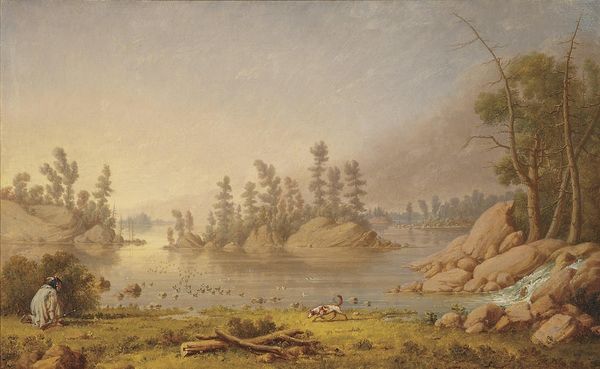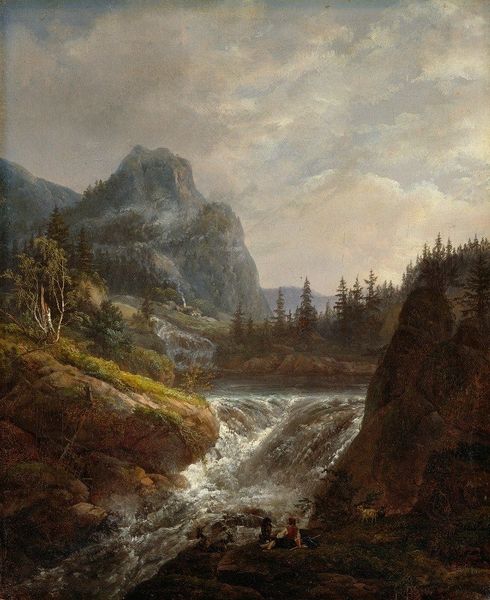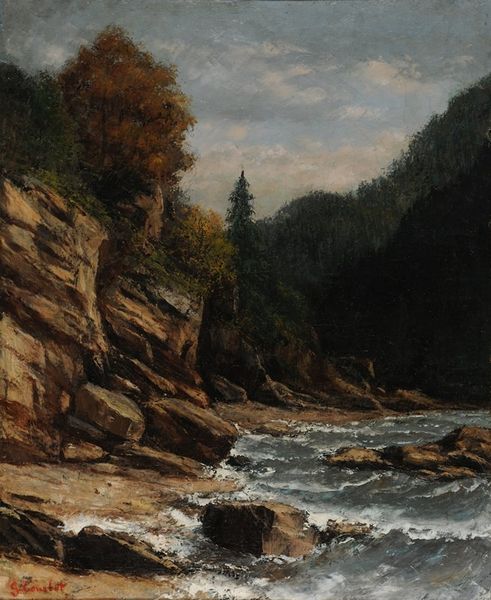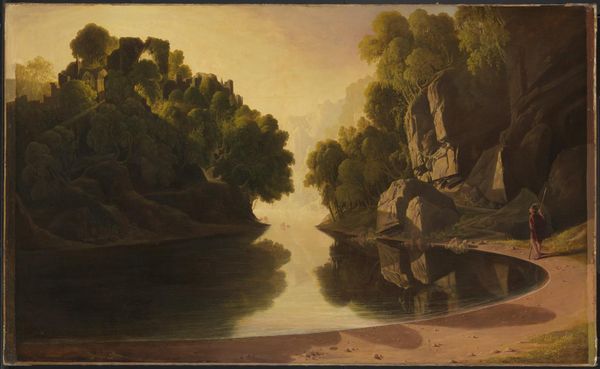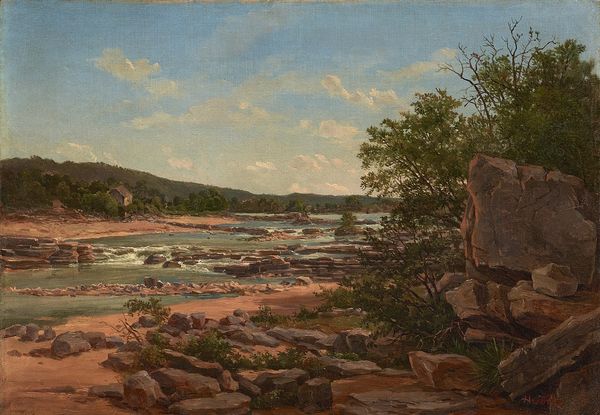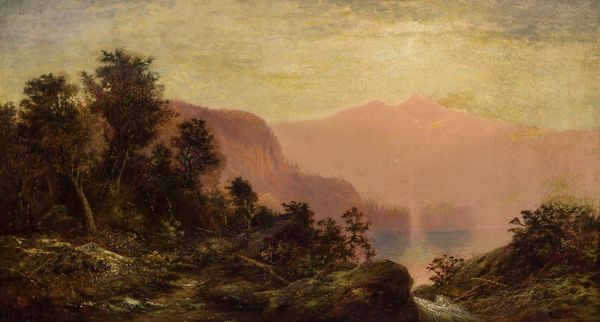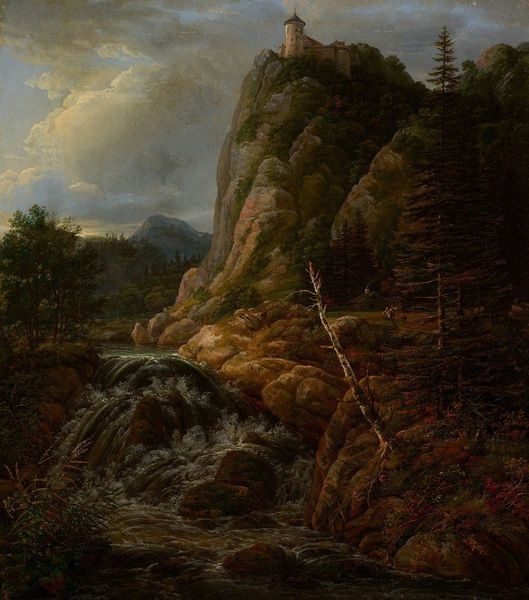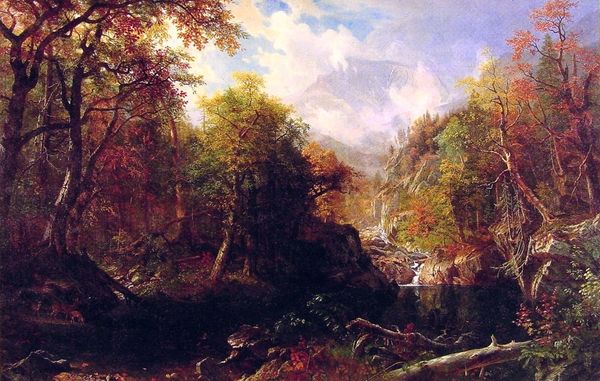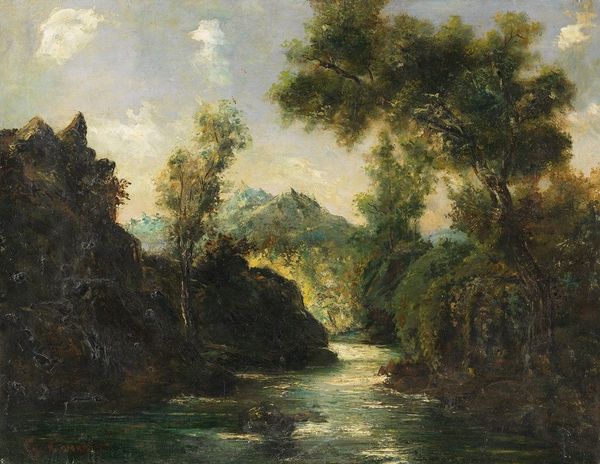
Copyright: Public Domain: Artvee
Editor: Here we have John Trumbull's "Norwich Falls," an oil painting from 1806. I'm immediately struck by how the landscape feels both serene and a little bit melancholic, maybe it’s the subdued palette. How do you interpret this work, especially given its historical context? Curator: The Hudson River School landscapes were very much embedded in the narratives of nation building, progress and also shaped by social inequalities. But whose stories are missing in these supposedly pristine depictions of the American landscape? Editor: That's a good question. I see the landscape… the waterfalls, the trees… I guess I never really considered who wasn't represented, who might have been excluded from that romanticized vision of America. Curator: Exactly. Who was displaced for this "progress?" What about the indigenous people and enslaved populations who lived and worked on that land? Examining such landscapes through a lens of social justice allows us to question the dominant narratives of that period. We can look at how land ownership and control, deeply interwoven with racial and economic disparities, shape what is deemed worthy of representation. Editor: So, it's about questioning the idea of an untouched, neutral landscape, and understanding the power dynamics inherent in these images? Curator: Precisely. This image becomes less a celebration of natural beauty, and more an inquiry into how ideas about nature and progress were constructed and deployed in early 19th century America to justify power imbalances. What histories get silenced? Editor: That's powerful. I’ll definitely look at these landscapes with fresh eyes now, considering whose stories might be missing. Curator: Remember, engaging with art is an opportunity to dissect dominant ideologies, prompting crucial conversations about history, identity, and the ethics of representation.
Comments
No comments
Be the first to comment and join the conversation on the ultimate creative platform.
